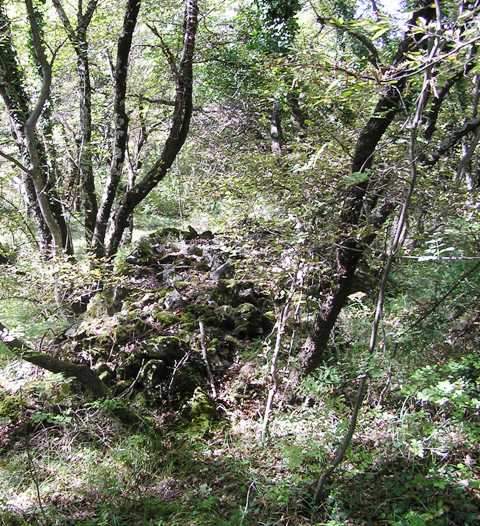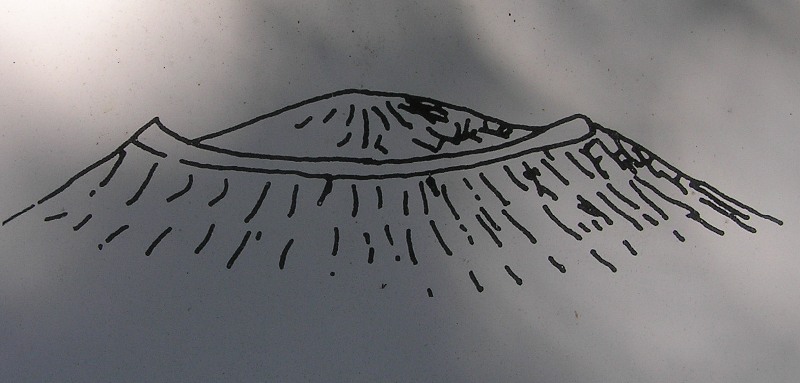
An outer wall to the west.

An outer wall to the west.

And in the cairn there appears to be a cist.

in the middle of the fort and top of the hill there appears to be a type of cairn.

Looking from east to west along the massive southern ditch.

The ditch in the north east.

The outer rampart on the south side.

Inner wall on the east side.

This wall is built on top of the rampart in the north west.

The massive southern wall/rampart.

More ancient walls holding up the south east rampart.

Ancient walls protect the northern ditch.

Massive boulders in the inner western wall.

The ramparts/ditch swing round to the south west.

We approached from the east clambering and climbing over truly massive walls.

The huge rampart on the east arcs north.

Taken from the north east, the hillfort is in the centre amongst the trees on top of the hill.

The walls to the south east must have been of unbelievable size.

From the notice board to the east of the fort.

From the notice board on the east side of the hill.
Once again we parked at a crossroads this time in the village of Sales, another beautiful wee place. Across the road there is a memorial to the local Slovene and Italian Partisans so it seemed apt that we were going to visit the hillfort that centuries ago had also defended this area.
Head north from here until the tarred road runs out at a crossroads. Luckily a local man was working on a wall and gave us precise directions to the fort. Go west and keep going following the path until a filled in (by leaves etc) pond, man made centuries ago to help feed animals. Go round the pond and head south. This will lead directly to a notice board which gives info about the fort.
Climb west over a couple of ancient walls until the huge rampart is met. The ditch for this is over 4m wide with the ramparts themselves still standing at 3m tall. There is 500m of this all round the top of the hill. Funnily enough if this fort had no trees it would resemble Down Law in Fife. (a stretch of imagination but reasonable I think.) The main entrance is on the south west and is 3.5m wide. Also in the middle of the fort there appears to be a cairn with perhaps a cist beginning to appear.
I walked all the way round the fort and climbed to the top of the southern wall. Looking down it seemed the whole of the south face was a wall, this must have been an important place and a place of habitation. Land around here seems, nowadays, to quite fertile so maybe back in the late Bronze Age/early Iron Age they decided to stay. One thing they did know about was how to built walls, most of them are still standing.
Then it was back down the hill retracing our steps back to the crossroads. On the other side of the road, a wee pub and fantastic food. I raised a glass to the memorial across the road!
Visited 17/10/2017.

